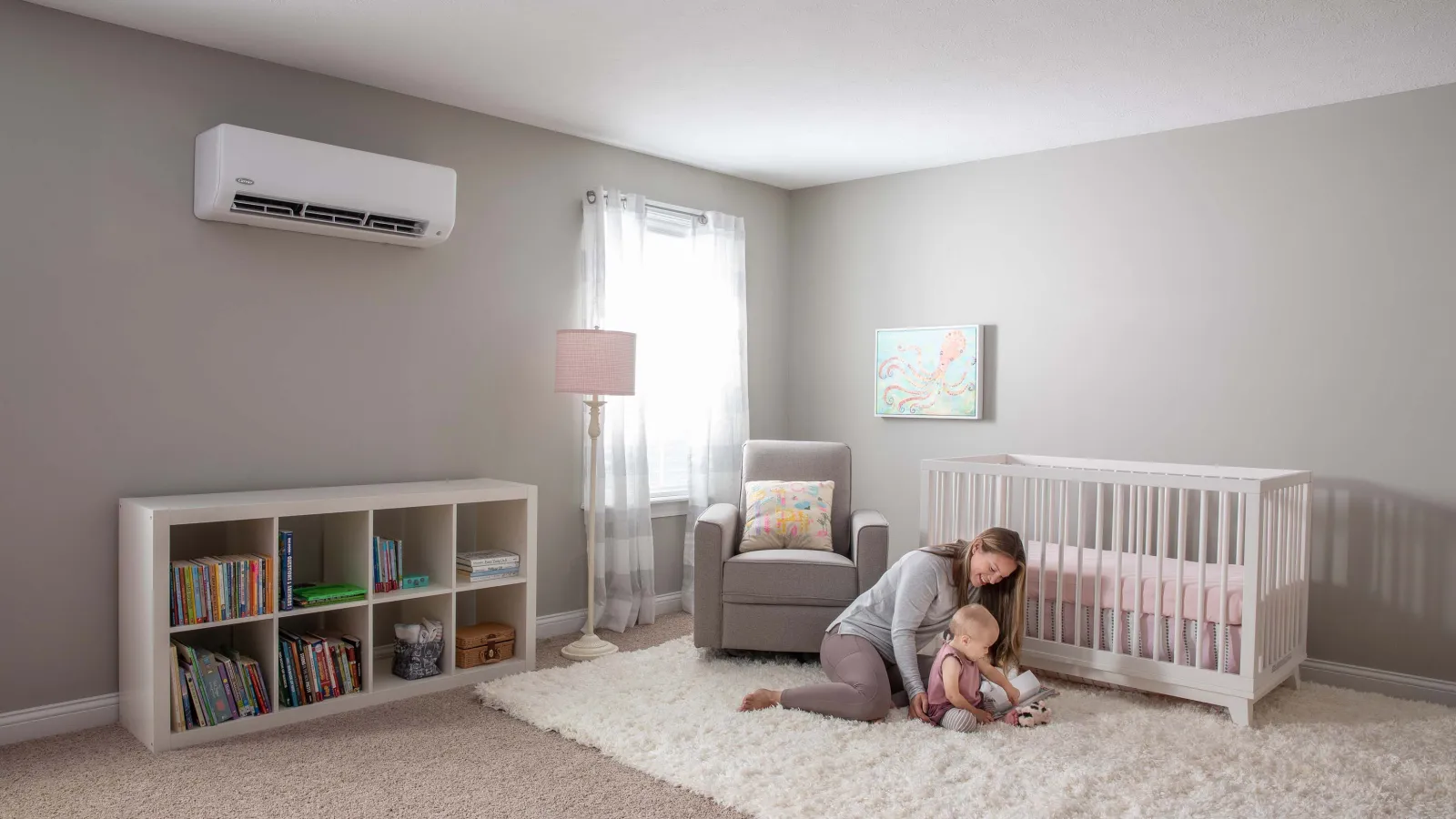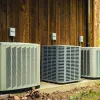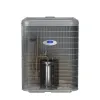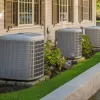Ductless mini-split HVAC systems have long been a mainstay for home renovations and additions. They're also a great choice when you're building a detached garage, workshop, or studio.
But can you have mini-split systems for your whole house? The answer, thankfully, is yes!
People love these systems because they're efficient, quiet, and sized to heat and cool small spaces. In most cases, they don't require ducts (hence "ductless"), which is one of the reasons they're so inexpensive to run. The more ducts you have, the more opportunities you have for energy loss. Ductless units simply don't have that problem.
Without ducts, you can also enjoy better indoor air quality. Leaky ducts are big sources of air infiltration. And when the leaks are in your attic or crawlspace (they usually are!), it can be really hard to keep your air as clean as you want it to be.
While ductless units aren't a panacea for indoor air quality — and we'll discuss their onboard air filters in just a bit — they do help you avoid the air quality problems associated with duct leakage.
So, why aren't more people outfitting their entire homes with these systems?
Well, some people do! We think taking your whole house ductless is an awesome idea and have performed whole-house ductless system installations for several clients. It can be done—even in existing homes!
I've already got ducts. Shouldn't I just use them?
If you want to, sure! There's a lot of inertia behind ducted HVAC systems. It's what people are used to. Houses are built to accommodate them. Most people move into homes that already have them… You get the idea. They're very much the default for HVAC.
But outfitting your whole house with mini split systems still holds several compelling benefits:
- Better efficiency than many typical ducted systems (see above)
- Zero energy loss or air quality concerns due to duct leakage
- Quiet operation: The units usually run at a low speed and don't make much noise. You usually don't even know they're on unless you check.
- Whole-house zoning: When installing ductless units throughout a whole house, you get to control the unit's temperature and/or humidity management. So, in a house with five units, you'd automatically get five different zones!
So ductless units cost less to operate, improve comfort, and you don't even hear them. Seriously! They're that great.
Many people building new high-performance homes will set the house up to be all-ductless from the get-go. But whether you're doing that or just outfitting your current home with ductless units, the process is similar.
This is how to outfit your whole house with mini split systems
The first step — other than finding an HVAC company with experience installing whole-house ductless systems — is the same one any capable and honest HVAC contractor takes: perform a load calculation.
Load calculation
To be more specific, the contractor should perform a Manual J load calculation. This exercise consists of several calculations, all of which help inform what size HVAC equipment you need for your home.
Long story short: We take a bunch of measurements, crunch a bunch of numbers and figure out what you need. Awhile back, we actually published a whole series of articles on load calculations. Check those out if you want all the details!
The second step, although it really could happens simultaneously to perform a blower door test.
Blower door test
During a blower door test, we depressurize your home and then analyze each room with an infrared camera. This tells us where you've got a lot of air leakage and thermal loss.
Why do the blower door test before installing ductless units? Because when we know how well your home performs in terms of energy preservation and loss, we can further hone our equipment recommendations.
Different mini-split units are capable of heating and cooling different areas of different sizes. In sizing systems for an entire house, there's just a lot of data we have to gather to make sure we install the right equipment in the right parts of your home.
If you're getting Mitsubishi ductless units…
…there's a special program we get to use that helps us determine the right size for your new ductless system(s). It's called Diamond Builder, and we get to use it because we're a Mitsubishi/Trane Ductless Pro contractor.
We're able to enter all of the data we gather, and the program tells us how many units you need, which sizes, and where they should go. Since we're a Mitsubishi dealer, nearly all of our ductless system clients can take advantage of this excellent program.
Sizing for heating vs. cooling
Until recently, HVAC contractors ran the risk of oversizing ductless systems for cooling. That's because they had to prioritize the sizing of the system for heating. During the winter, you'll be relying on a heat pump that doesn't have any heat strips, so ductless units usually had to have a lot of capacity in whole-house situations.
Nowadays, that risk is much lower. Thanks to design enhancements like Mitsubishi's Hyper Heating and Trane's Pro Heating technologies, ductless systems are now way better at heating your home when the temperature is really low. For example, a 2-ton Hyper Heating system may heat as well as a 3-ton standard system.
For you, the homeowner, that means it's a whole lot easier for your contractor to select a system that does a good job of heating and cooling.
We still prioritize heating when sizing the system, but it's rarely a struggle to come up with a combination of units that effectively heats and cools without sacrifices. These technologies have helped make it possible for more people to go completely ductless!
With ducts, too?
In some cases, we can mix ductless units with ducted mini splits. These units are similar to ductless units in their footprint and design with the big exception that they do have ducts.
Units like these are useful in certain situations. For instance, in a two-story home with three bedrooms upstairs, you might want a single air handler for all of the bedrooms. You'd still get the zoning benefits of a system that covers a small area. However, you wouldn't need to have an air handler in every single room. There might be one air handler in the attic with short duct runs to each of the bedrooms.
This is just one example of how ducted mini splits might be installed, but it should give you an idea of what's possible.
Fresh air and humidity
If you're installing ductless units in a high-performance home or a home that has a lot of energy improvements, you need a strategy for fresh air.
Really airtight houses are great for reducing energy loss. Unfortunately, they're not so great at ventilation. While it's great to eliminate the infiltration of unfiltered outdoor air, you still need some fresh air circulating throughout your home.
In addition to your ductless units, you may need a mechanical ventilation system to ensure you're circulating fresh air. Here in the south, an ERV or a whole-house dehumidifier are typically your best bet.
Why one or the other? Well, some airtight homes tend to retain humidity. Ductless systems have a dehumidification mode, which is great, but you have to manually set them to that mode. Even then, you might need a little extra dehumidification if the mini-split isn't getting you where you want to be, comfort-wise.
High-performance homes often need humidity management and/or fresh air strategy with or without ductless units. When you need one or both — and you're about to go all ductless — we like to solve all those problems at the same time.
Air filtration
Ah, the one downside of ductless systems! While not having ducts helps improve indoor air quality, you're not going to get a whole lot of air filtration from the filters that come with these units. They're the washable variety, and you only get one type.
Unfortunately, the level of filtration they offer is minimal.
If you're keen to maximize your indoor air quality, you may need supplemental filtration when you go all-ductless. One option is to circulate air through a media filter or HEPA system in your existing ductwork, but then you've gone back to using ducts.
Another option is a standalone air purifier. We recommend Austin air purifiers for quality and longevity. Our clients like them, too.
That's all there is to it. Pretty much anyone can go all-ductless!
Like any major home improvement, there's a lot of legwork upfront. Expenses, too. But in the long run, you enjoy better comfort, air quality, and energy efficiency. Ductless mini-split systems systems are great at all of those things!
If you live in the Atlanta area and are interested in a ductless system for your home, give us a shout! We'll listen while you explain what you're looking for. Then we'll send a consultant to your home to perform an analysis and provide a quote.






